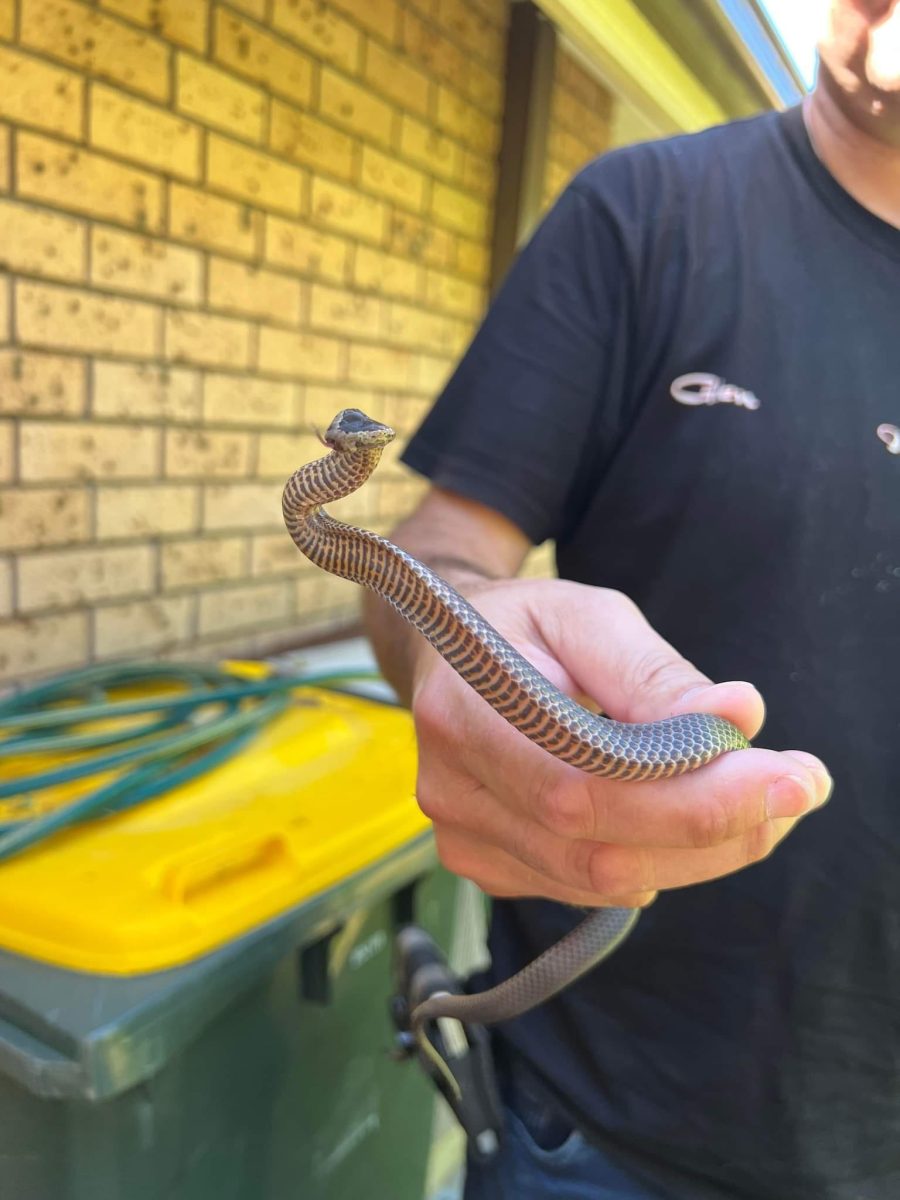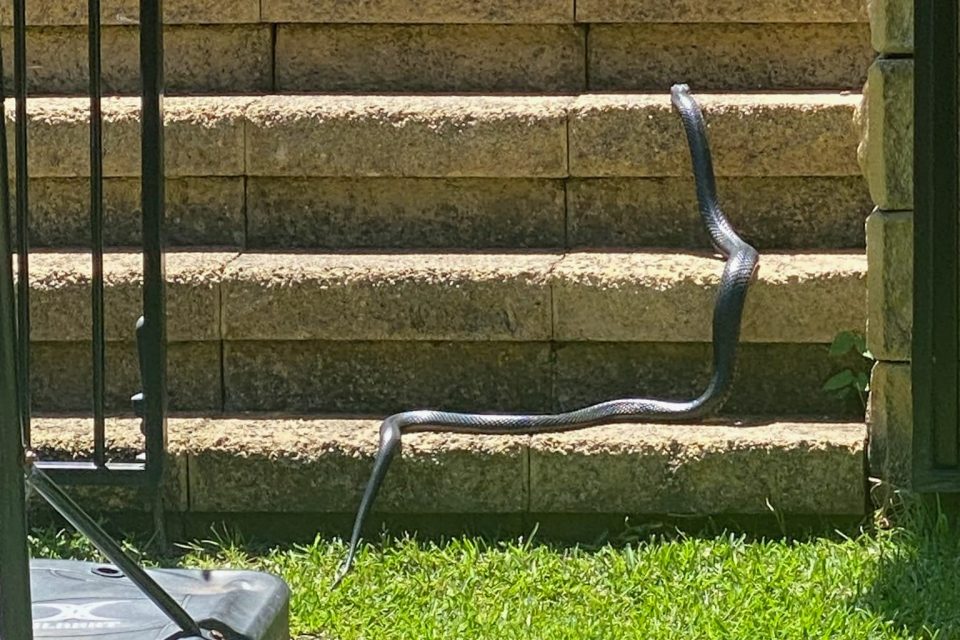
The shy, nocturnal golden crown snake is sometimes mistaken for an eastern brown due to its similar colouring and big attitude, however it rarely bites. Photo: Illawarra Snake Catcher.
You can probably tell the difference between a red-belly and a brown snake – but how about a golden crown and an eastern small-eyed?
As the weather warms up snakes are on the move, and the Illawarra is home to a number of less well known species.
Illawarra snake catcher Glenn Peacock said some of those were just as common as their famous cousins, but only came out at night.
“Around the Illawarrra, red-bellies are our bread-and-butter snake, the main venomous species we get,” he said.
“We have a couple of common nocturnal species, golden crowns which are relatively harmless, and eastern small-eyed that are nocturnal and fairly venomous.”
The golden crown snakes can grow up to 75 cm long, but are often much smaller, around 30 cm.
A brownish colour with a lighter halo, or crown around their head, they are venomous, but so reluctant to bite they are not considered dangerous.
If they feel threatened, they will posture up, flatten their head and strike, although usually with a closed mouth.
“Their biggest problem is people assume they’re an eastern brown, and believe them when they act tough,” Glenn said.
“If someone calls me at night and says they have a brown snake in their house acting really aggressively, I know it’s a golden crown.
“I’ve caught thousands over the years and rarely seen one open its mouth.”
All very well and good, but what about their night-time compatriot, the eastern small-eyed?
It’s also commonly mistaken for a more dangerous relative. Eastern small-eyed snakes are black, with a white or pinkish underbelly.
Unlike its shiny cousin, the red-belly, the eastern small-eyed is matte or charcoal black.
They rarely grow longer than a metre, and more commonly are around the 50 cm mark.
Bites should be treated seriously, and can cause death.
Marsh snakes also pop up in the Illawarra. They can look like black or brown snakes, with white lines along their mouths.
They’re mildly venomous – a bite will cause redness, swelling and nausea – but these snakes are so shy they’re rarely seen.
“We also get the odd tiger snake; we average two or three a season, but last year we got eight,” Glenn said.
“Eastern browns do randomly turn up but they’re pretty rare – I might see two or three a season.
“Diamond pythons are another common local, and they’re mostly nocturnal.”





Glenn said he’d also come across snakes that had hitched a ride in a car or a truck.
“We get the odd copperhead catch a lift from the Southern Highlands, and recently there was a green tree snake in Albion Park, which you don’t usually see until Helensburgh,” he said.
Most rare of all are washed up sea snakes.
Glenn said he was called to catch one or two a year, most often washed up at Bellambi, or down in Gerringong.
“They have to be really sick to wash up,” he said.
“They breathe air and drink fresh water, but live in the open ocean because their bodies are so fragile they can’t support their own weight out of the water.
“We get a couple of species of sea snake, and they are all highly venomous.”
So now you can tell your golden crown from an eastern brown, what do you do if you spot one in the wild?
If you’ve found yourself too close for comfort, firstly, don’t panic.
“It’s easier said than done,” Glenn said.
“If it happens to be near your feet and you don’t know what it is, stand still.
“When you’re still, you’re just a tree to the snake and they’re unlikely to bother you. When it gets a couple of metres off, move away slowly.
“Most snakes don’t want to bite you, and will give plenty of warning before they do.”
If there’s one in the yard you’re worried about, keep an eye on it and contact a local snake catcher.
“Often they’re just on their way through, they’ve got no intention of staying,” Glenn said.
“If you can take a photo and send it through we can identify it. If it’s harmless you can let it be, and if not we’ll come and get it.
“A lot of the time people just need reassurance – and a diamond python is very different to a red-belly!”










